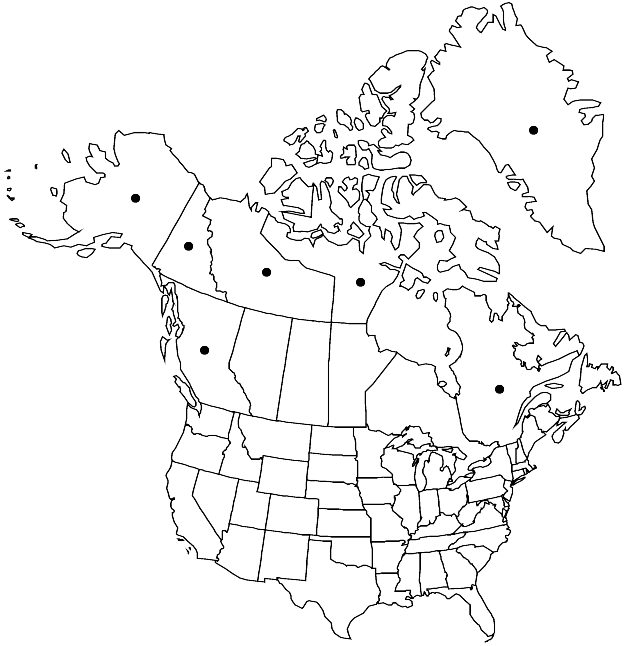Difference between revisions of "Orthothecium intricatum"
in P. Bruch and W. P. Schimper, Bryol. Europ. 5: 108. 1851.
FNA>Volume Importer |
imported>Volume Importer |
||
| Line 50: | Line 50: | ||
|publication year=1851 | |publication year=1851 | ||
|special status= | |special status= | ||
| − | |source xml=https:// | + | |source xml=https://bibilujan@bitbucket.org/aafc-mbb/fna-data-curation.git/src/bb6b7e3a7de7d3b7888a1ad48c7fd8f5c722d8d6/coarse_grained_fna_xml/V28/V28_867.xml |
|genus=Orthothecium | |genus=Orthothecium | ||
|species=Orthothecium intricatum | |species=Orthothecium intricatum | ||
Revision as of 22:49, 27 May 2020
Plants small, in mats or tufts, green to yellow-green. Stems 4 cm, 0.2–0.3 mm wide, curved-ascending, sometimes creeping, irregularly branched. Leaves erect to erect-spreading, homomallous, narrowly lanceolate, not or faintly striolate, 1–1.8 mm; margins plane to somewhat revolute, entire or somewhat sinuate; apex gradually subulate; ecostate or costa double, very short; basal laminal cells shorter, broader than medial cells, yellow; medial cells elongate, linear, 45–75 × 4–6 µm. Specialized asexual reproduction rare, by propagula in leaf axils, short, filamentous. Seta red-brown. Capsule symmetric, 1.5–2 mm. Spores 10–14 µm.
Habitat: Moist shaded calcareous soil, granite, schist, limestone, rock ledges, vertical cliff faces, tundra
Elevation: moderate elevations (200-1500 m)
Distribution

Greenland, B.C., N.W.T., Nunavut, Que., Yukon, Alaska, n Europe, Asia (China, Japan).
Discussion
Orthothecium intricatum is distinguished by leaves that are homomallous and narrowly lanceolate, with plane to slightly revolute margins. The stems are yellow-brown; the leaves are occasionally twisted-flexuose when dry; and the setae are 1.5–2 cm. Sporophytes are rare, and a station in Ontario is doubtful.
Selected References
None.